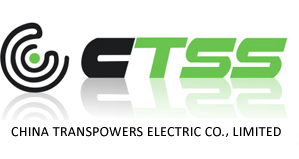Home >> News Center
Going for Green: Can Offshore Wind Produce Hydrogen?
2024-5-13 Mr/Mrs Shannon Cuthrell eepower.com
Stony Brook University is launching a research testbed to combine offshore wind turbines and electrolytic hydrogen for residential heating and cooling.
At the university’s Advanced Energy Research and Technology Center (AERTC), researchers will design and fabricate a wind-to-hydrogen concept with optimized energy storage efficiency and controls to maximize resource use. Industry partners will help scale technical performance for commercial applications.
The project comes after New York’s first offshore wind project started operating in Long Island last December, totaling 132 MW of capacity. State regulators have approved two more developments: Sunrise Wind (924 MW) and Empire Wind 1 (810 MW). Both are expected to come online in 2026 and 2027 to power more than 1 million homes and meet 10% of demand in New York City and Long Island.
As the state pursues its 2035 goal to deploy 9 GW of offshore wind, an opportunity arises to expand clean energy production with hydrogen. Long Island has an average load of 2.3 GW and a peak load of 5.3 GW, meaning offshore capacity will likely surpass local demand, and the excess energy can serve hydrogen production.
Why Combine Offshore Wind and Hydrogen?
AERTC’s program aims to balance the benefits of both technologies. Offshore wind plants offer a large capacity factor, while the sea’s steady wind flow ensures a reliable hydrogen supply. Combining the two unlocks reliable energy storage and carbon-free power for residential heating and cooling systems.
Hydrogen production starts with a proton exchange membrane (PEM) electrolyzer that splits water into oxygen and hydrogen. Hydrogen ions travel across the membrane to the cathode, while water transitions into oxygen at the anode. Electrons rejoin the hydrogen ions around an external circuit to create hydrogen gas, which can be used for energy storage.
When wind turbines or solar panels power this electrolytic reaction, the result is green hydrogen with no emissions, as opposed to blue or gray variants, which rely on fossil fuels for electrolysis. Water vapor is the only byproduct of converting green hydrogen to usable energy.
Integrating hydrogen into offshore wind sites adds grid-balancing mechanisms to manage the intermittency of wind and solar generation, a persistent challenge in the energy transition. Grid operators require dispatchable resources to release power on demand.
Like a long-duration battery, hydrogen can be tapped to meet peak demand during low-wind periods. Hydrogen containers could support hours to days of storage in the thousands of kilograms.
System Design Considerations
Offshore wind-to-hydrogen plants require a system design tailored for harsh, remote sites. Three general configurations have been tested in existing demonstrations, mainly in Europe.
One option pairs an offshore wind farm with an onshore electrolyzer. Power from the turbines is captured at an offshore substation, exported ashore via conventional cables, and then delivered to a land-based substation and electrolyzer. The output could be used for grid storage or industrial supply chains.
Alternatively, the electrolyzer can be placed in a centralized offshore layout, where hydrogen is produced near the turbines and sent to shore by pipeline. This resembles the conventional plant model but swaps the offshore substation with an electrolyzer station. In addition to the pipeline and PEM electrolyzer, the main components include AC/DC rectifiers, seawater pumping and desalination systems, an onshore cable connection for backup power, and control and measurement equipment.
Researchers recently demonstrated a 600 MW centralized platform in Poland that could channel the Baltic Sea’s wind conditions at a 45–50% capacity factor to churn out an average of 3,508 metric tons of hydrogen monthly.
On-turbine designs may be ideal for floating offshore wind plants that tap into stronger winds further from shore. In this distributed model, each turbine is fitted with electrolysis equipment, and the power for hydrogen production is generated directly on the floating structures. Floating platforms—especially those with semi-submersible foundations—are compatible with electrolyzer integration, reducing the need for technical modifications or separate support structures.
This design framework was proven last year in a world-first offshore hydrogen pilot project off the coast of France. The 1 MW floating electrolyzer cranks out more than 400 kilograms of hydrogen daily.


 Hydro Turbine Generator Units
Hydro Turbine Generator Units
